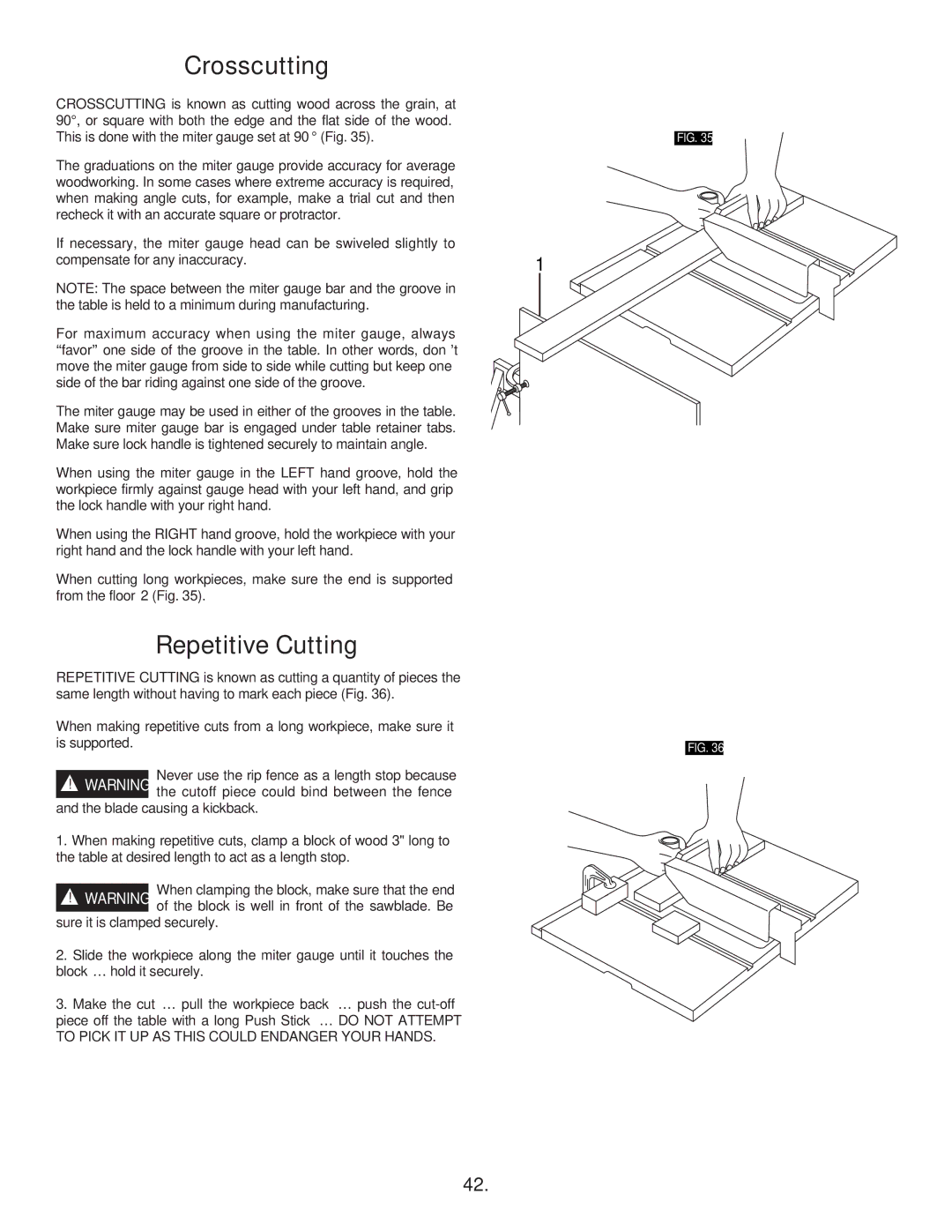
Crosscutting
CROSSCUTTING is known as cutting wood across the grain, at |
|
|
|
|
90°, or square with both the edge and the flat side of the wood. |
|
|
|
|
This is done with the miter gauge set at 90° (Fig. 35). |
|
|
|
|
|
|
| FIG. 35 | |
The graduations on the miter gauge provide accuracy for average |
|
|
|
|
woodworking. In some cases where extreme accuracy is required, |
|
|
|
|
when making angle cuts, for example, make a trial cut and then |
|
|
|
|
recheck it with an accurate square or protractor. |
|
|
|
|
If necessary, the miter gauge head can be swiveled slightly to |
|
|
|
|
compensate for any inaccuracy. | 1 |
|
| |
NOTE: The space between the miter gauge bar and the groove in |
|
|
|
|
|
|
|
| |
the table is held to a minimum during manufacturing. |
|
|
|
|
For maximum accuracy when using the miter gauge, always |
|
|
|
|
“favor” one side of the groove in the table. In other words, don’t |
|
|
|
|
move the miter gauge from side to side while cutting but keep one |
|
|
|
|
side of the bar riding against one side of the groove. |
|
|
|
|
The miter gauge may be used in either of the grooves in the table. |
|
|
|
|
Make sure miter gauge bar is engaged under table retainer tabs. |
|
|
|
|
Make sure lock handle is tightened securely to maintain angle. |
|
|
|
|
When using the miter gauge in the LEFT hand groove, hold the |
|
|
|
|
workpiece firmly against gauge head with your left hand, and grip |
|
|
|
|
the lock handle with your right hand. |
|
|
|
|
When using the RIGHT hand groove, hold the workpiece with your |
|
|
|
|
right hand and the lock handle with your left hand. |
|
|
|
|
When cutting long workpieces, make sure the end is supported |
|
|
|
|
from the floor 2 (Fig. 35). |
|
|
|
|
Repetitive Cutting
REPETITIVE CUTTING is known as cutting a quantity of pieces the
same length without having to mark each piece (Fig. 36). |
| |
When making repetitive cuts from a long workpiece, make sure it |
| |
is supported. |
| FIG. 36 |
|
| |
! WARNING | Never use the rip fence as a length stop because |
|
the cutoff piece could bind between the fence |
| |
|
| |
and the blade causing a kickback. |
| |
1. When making repetitive cuts, clamp a block of wood 3" long to |
| |
the table at desired length to act as a length stop. |
| |
! WARNING | When clamping the block, make sure that the end |
|
of the block is well in front of the sawblade. Be |
| |
|
| |
sure it is clamped securely. |
| |
2.Slide the workpiece along the miter gauge until it touches the block … hold it securely.
3.Make the cut … pull the workpiece back … push the
42.
